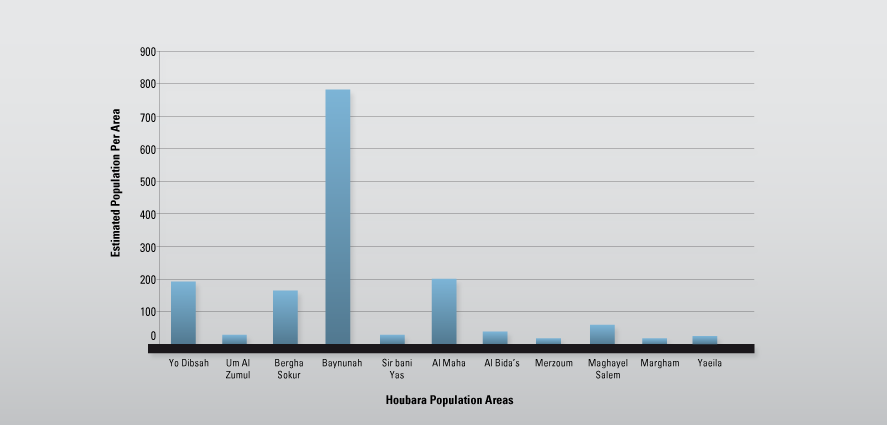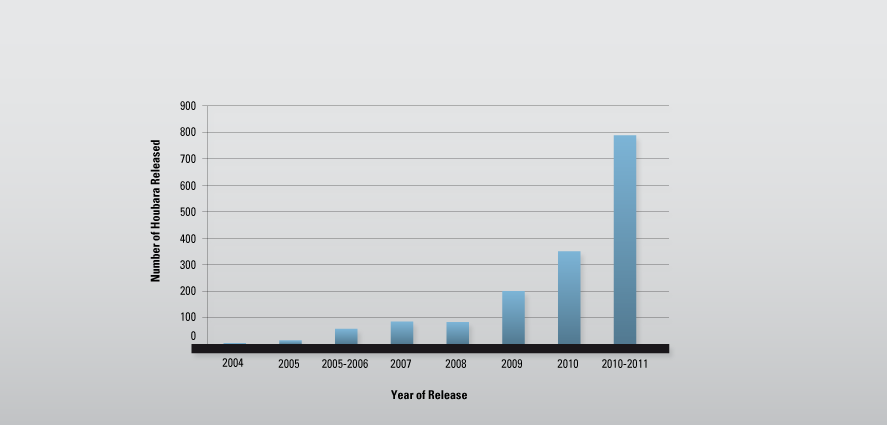
Sea to Summit
Select a map
Houbara: Asian Houbara Distribution & Population





The Asian Houbara (Chlamydotis macqueenii), a remarkable desert species that winters in the UAE, has experienced sharp declines globally in population attributed primarily to loss of wintering and breeding habitat, over trapping and unregulated hunting. To attenuate the decline of this species (the favoured prey of falconers), the International Fund for Houbara Conservation (IFHC) and its daughter organisation the National Avian Research Centre (NARC) are working with other nations to protect Houbara populations in the wild through breed and release programmes. The number of Houbara released per year at select sites in the UAE has increased markedly from 2004 to the 2010–2011 release period, during which 884 birds were released into the wild.
There are nine known sites in the UAE that support populations of Houbara. Baynunah, which includes a proposed 769 square kilometre Protected Area for Houbara, supports the largest known population of Houbara in the UAE, with an estimated 400 birds. Protecting the habitat of this vulnerable species, as well as furthering our understanding of its migration patterns, population dynamics and breeding biology, is essential to the long-term survival of the Asian Houbara.
Large numbers of Houbara are trapped for use in training falcons to hunt. Encouraging the use of alternate species or captive-reared birds for training is essential to the protection of Houbara populations.

















